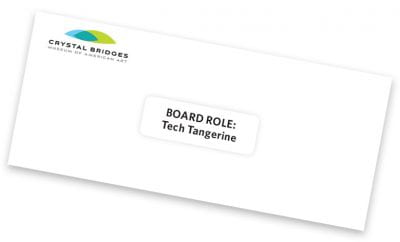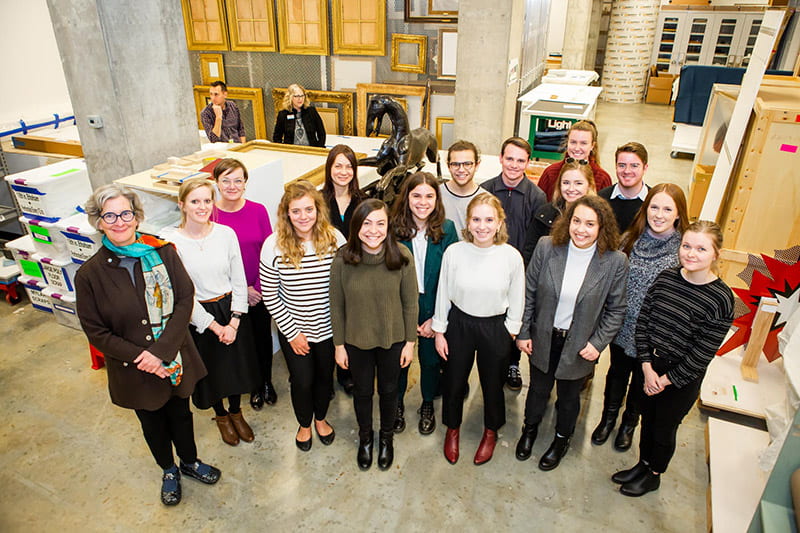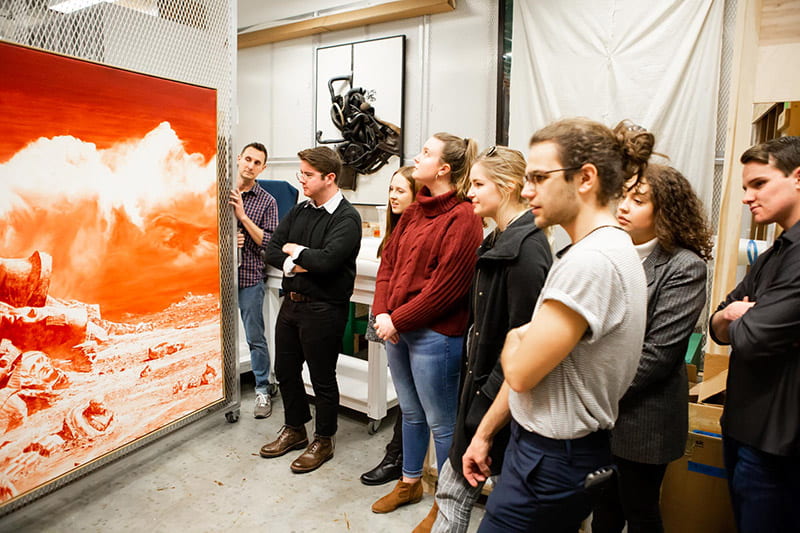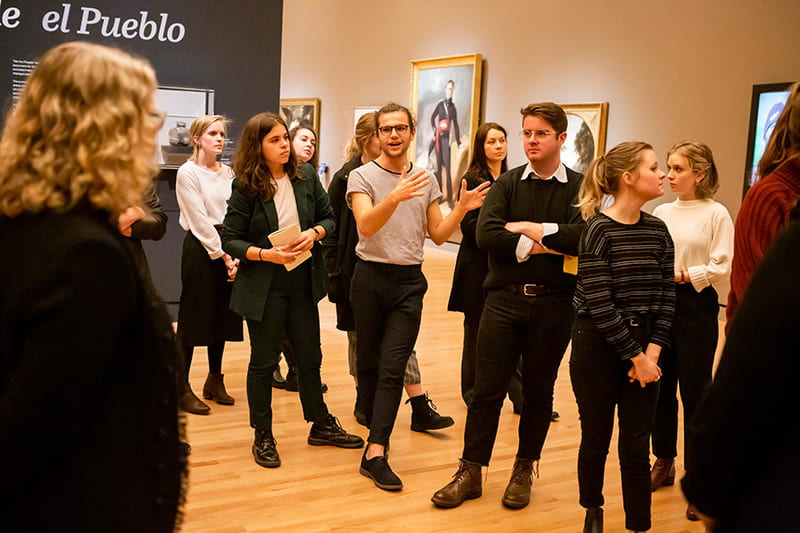Class Notes: A $600,000 Question
By Max Frank
Photos by Daniel Moody
Last spring, in the Honors College Forum “Museum,” 12 students from a wide range of majors attended weekly classes at Crystal Bridges Museum of American Art. Guided by Crystal Bridges’ leadership team, the “Museum 12” participated in discussions on the latest trends in technology, programming and exhibition design, attended an opening reception and even ventured behind the scenes into the museum’s vault.
In one memorable session, the students got a hands-on introduction to museum budgeting. Honors landscape architecture major Max Frank reports.
 This week at the museum, we learned on arrival that we would be in a board meeting for the duration of our class. What we didn’t find out until we started was that we would be the board members! In order to give us a real sense of how decisions are made in museums and nonprofit organizations, Sandy Edwards, deputy director of the museum, and Tracy Cude, chief financial officer, put the reigns in our hands and let go. We were primed for productive discourse by an assigned reading from Making Museums Matter by Stephen Weil, which chronicles the difficulties museums have in measuring their success and lays out a framework for doing so effectively. This was the sole preparation we had for what was to come. First, we each received a file that contained an annual budget, summary, and proposed plans of action. Inside a sealed envelope, we were also given a new identity for our board member. This was when I stopped speaking as Max and started speaking as Tech Tangerine, a suave startup playboy with an attitude and an agenda.
This week at the museum, we learned on arrival that we would be in a board meeting for the duration of our class. What we didn’t find out until we started was that we would be the board members! In order to give us a real sense of how decisions are made in museums and nonprofit organizations, Sandy Edwards, deputy director of the museum, and Tracy Cude, chief financial officer, put the reigns in our hands and let go. We were primed for productive discourse by an assigned reading from Making Museums Matter by Stephen Weil, which chronicles the difficulties museums have in measuring their success and lays out a framework for doing so effectively. This was the sole preparation we had for what was to come. First, we each received a file that contained an annual budget, summary, and proposed plans of action. Inside a sealed envelope, we were also given a new identity for our board member. This was when I stopped speaking as Max and started speaking as Tech Tangerine, a suave startup playboy with an attitude and an agenda.
As Tangerine, I knew that in order to avoid obsolescence in the coming century, the museum had to become a center for technological innovation and excellence. Long gone are the days of school tours and intellectualism, and museums need to respond to contemporary society by addressing the needs of its people. Given my viewpoint, it is no surprise that I was quite a contested presence at the table. Surrounded by established professionals and respected members of the art world, a young tech entrepreneur like Tech Tangerine might seem out of place, and in some ways he certainly would be. But according to Edwards and Cude, this tension in the boardroom is what forges responsible and informed decision making. A diversity of opinions will surely bring disagreement, especially where funding allocation is concerned, but the ability to weigh all sides of an issue is essential to the success of an organization.
We learned this firsthand, as we dived into our board discussion. Faced with a $600k budget surplus and a host of recommended ways to allocate it, we set forth to reach a consensus on which plans to fund. Among the list were items like increased insurance, cybersecurity, and work spaces, facility enhancements like trail lighting and a staff elevator, and major overhauls such as another gallery reinstallation and a renovated children’s dining area. After Edwards and Cude briefly overviewed each option with us, deliberation began. While we didn’t initially know anyone else’s board member identity, it quickly became clear where each member’s values lay. The initial task, allocating funds to a list of enhancements, seemed straightforward and prescribed, the conversation quickly developed into debate over scholarship, engagement, strategy, and impact.
When all was said and done, Tech Tangerine was one of two board members who was not in support of additional fundraising efforts, but cleverly negotiated a deal: In exchange for his fundraising in the tech sector, he proposed a new position at the museum: Director of Digital Enterprises. This position (along with its competitive salary) would help satisfy Tangerine’s vision for the museum, and the fundraising efforts would enable a host of opportunity for the other recommended projects. According to Edwards and Cude, this can happen often, and is the reason they seek out a wide array of diverse talents and personalities for their board. Often, over the course of the meeting, possibilities are introduced through this active, lively, and potentially tense scenario.
While I certainly do not agree with much of Tech Tangerine’s outlook, he certainly plays a valuable role on the board of a non-profit organization. Because profit cannot serve as the ultimate benchmark of success in mission-based organizations, it can be much more difficult to steer them responsibly, and a diverse board is one of the soundest ways to ensure success.





